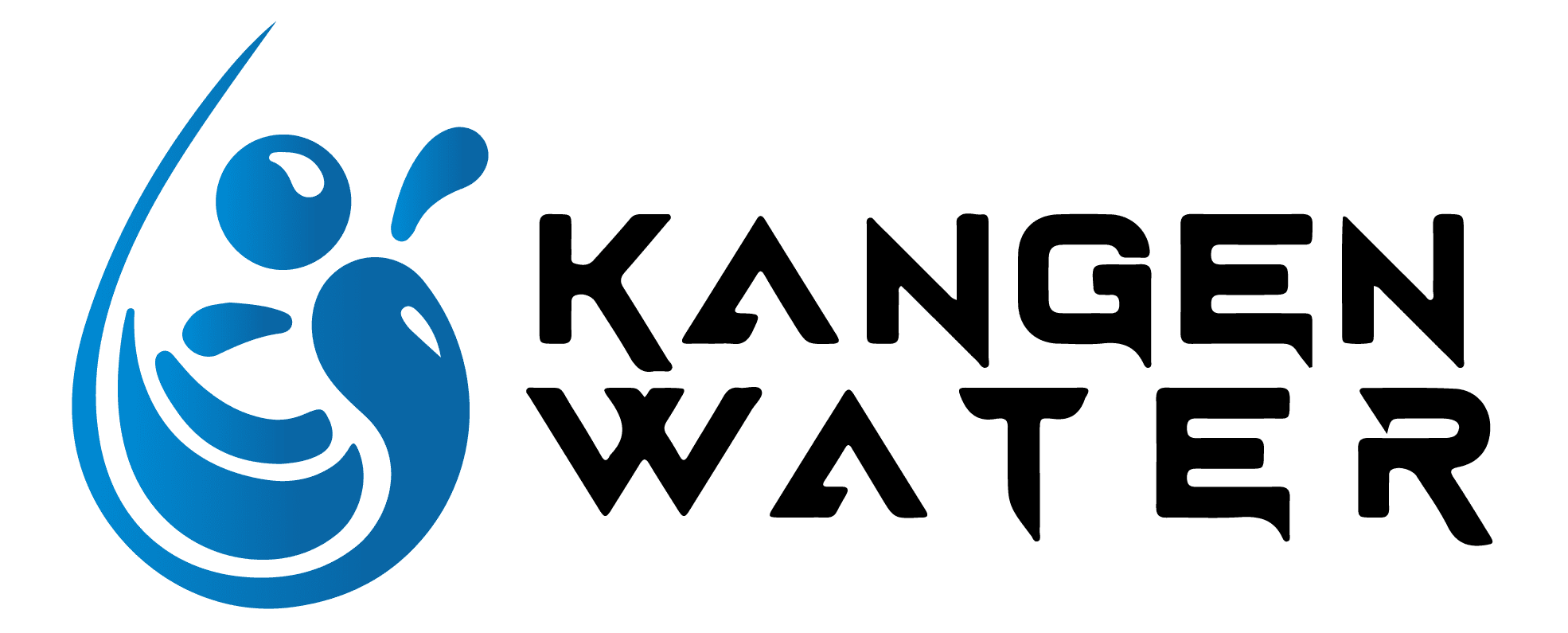Every few years the wellness world latches onto a beverage that promises to reset, recharge, or otherwise rescue our bodies from modern living. In the 2010s it was cold-pressed juice; more recently it’s been mushroom coffee. Sitting quietly yet persistently in the background is “Kangen Water” — a slightly alkaline, hydrogen-rich water produced by Enagic® electrolysis units. Friends swear it soothes heartburn, distributors tout it as an antioxidant powerhouse, and skeptics roll their eyes. What, then, does the evidence really say? Let’s unpack the science, the marketing, and the day-to-day realities of owning one of these shiny countertop machines.
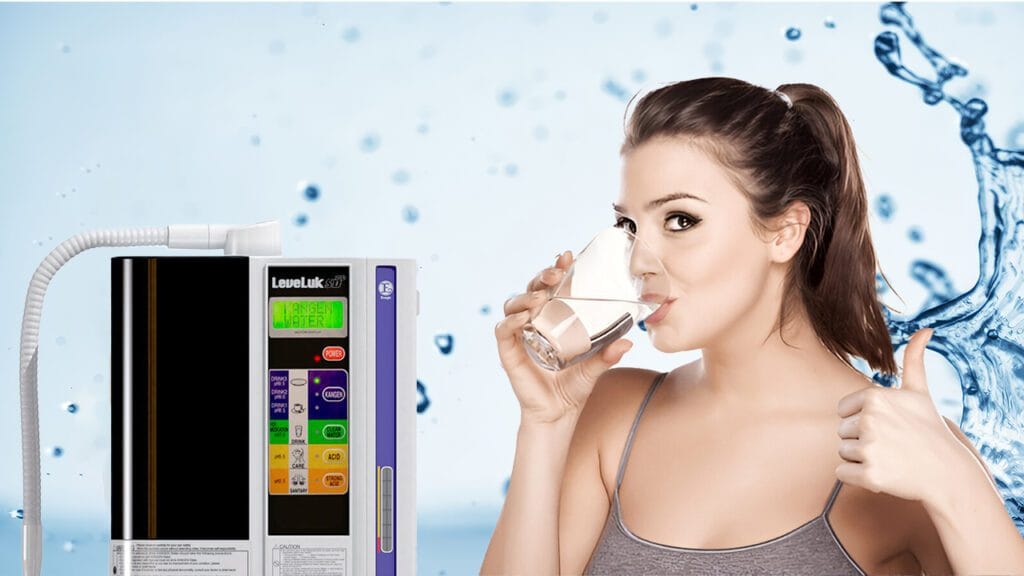
What Exactly Is Kangen Water?
The term kangen (還元) translates loosely from Japanese as “return to origin,” a nod to the notion that mildly alkaline water helps the body regain its natural balance. Enagic’s devices run tap water across platinum-coated titanium plates, splitting the stream into acidic and alkaline fractions. The alkaline portion exits at roughly pH 8.5–9.5 and is sold—quite literally—as “Kangen Water®.”
Enagic has done a masterful job building name recognition. More than a million machines have left its factories, propelled by an aggressive multilevel-marketing army. In Japan, regulators even label the ionisers “medical devices” for mild gastrointestinal relief. Cross the Pacific, however, and the U.S. FDA categorises the very same boxes as ordinary kitchen appliances; no therapeutic claims are approved.
A quick reality check: the process changes pH and redox potential but barely touches contaminants. Lead, pesticides, or microbes in the municipal supply remain your problem unless you add separate carbon or reverse-osmosis filtration. Translation? Kangen Water is alkaline, not purified.
How Do These Kangen Water Ionizer Machines Work?
The nuts and bolts
- Pre-filtration. A simple sediment and carbon cartridge knocks out chlorine taste and big particles.
- Electrolysis chamber. Four to twelve platinum-plated titanium electrodes receive a gentle DC charge.
- Cathode side (alkaline). Gaining electrons dissolves a pinch of molecular hydrogen (H₂), nudging pH upward and driving oxidation-reduction potential (ORP) down to about –200 to –600 mV.
- Anode side (acidic). Losing electrons produces oxygen, free protons, and a dash of hypochlorous acid, dropping pH.
- Diaphragm split. A membrane keeps the two streams from remixing, so you can collect either outlet at will.
Why the obsession with plate count? More metallic surface means more current density, which in turn means steeper pH shifts and higher dissolved hydrogen. That’s why the flagship Leveluk K8 (eight plates) costs more than some people’s first car.
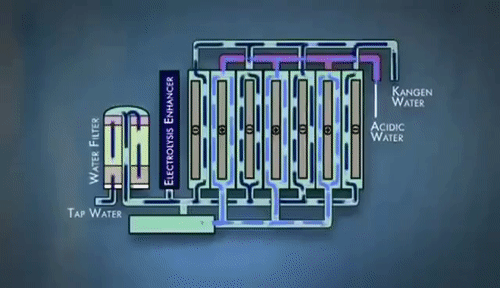
The Five Official Water Types (and What They’re Good For)
| pH | Enagic label | Everyday use | Drinkable? |
| 11.0–11.5 | Strong Kangen Water | Degreasing pans, stripping pesticide wax | ✘ |
| 8.5–9.5 | Kangen Water | Drinking, cooking, coffee | ✔ |
| 7.0 | Clean Water | Baby formula, medication | ✔ |
| 4.0–6.0 | Beauty Water | Skin and hair rinse, plant mister | ✘ |
| 2.5–3.0 | Strong Acidic | Disinfecting cutting boards & toothbrushes | ✘ |
If you’re tempted to gulp the super-high or super-low pH varieties, resist. They’re meant for cleaning surfaces, not stomachs.

A Quick Chemistry Refresher of Water
Remember that pH is logarithmic: pH 9.5 water is 100 times less acidic than neutral pH 7. ORP, meanwhile, measures electron-donating potential; a negative value is pitched as “antioxidant.” Electrolysis also dissolves small amounts of molecular hydrogen (typically 0.5–1.5 ppm). Animal studies link dissolved H₂ to anti-inflammatory effects, but the doses used in laboratories dwarf what a home ioniser produces.
One marketing chestnut you can safely file under fiction is the “micro-cluster” claim. Water molecules constantly re-shuffle their hydrogen bonds in trillionths of a second. No peer-reviewed study shows that alkaline water slips into cells faster than plain old H₂O.
The Evidence
| Health claim | Best studies | Verdict |
| Acid reflux (GERD) | In-vitro work shows pH 8.8 water denatures pepsin; a couple of small human trials find symptom relief when paired with a Mediterranean diet. | Promising but hardly conclusive |
| Hydration and viscosity | Crossover sports studies (subjects rarely top twenty) report marginally lower post-exercise blood viscosity. | Weak evidence |
| Blood sugar & lipids | A 2022 cross-sectional survey of 304 post-menopausal women linked alkaline water intake with better glucose and triglyceride ratios. Correlation, not causation. | Low-quality evidence |
| Bone health | Meta-analyses show no fracture-risk reduction versus mineral-rich tap water. | No clear advantage |
| Longevity | One mouse study saw a lifespan bump from hydrogen-rich water—but doses were far higher than any countertop unit can muster. | No human data |
Bottom line: the strongest signal so far is mild relief of acid reflux. Everything else hovers somewhere between “intriguing” and “thin.”
Separating Myths from Marketing
“Balances body pH.” Nope. Your blood is locked between pH 7.35 and 7.45 by lungs and kidneys.
“Cures cancer or diabetes.” Zero Level-1 evidence. Making such claims in the U.S. invites FDA wrath.
“Micro-clusters hydrate faster.” Unsupported.
“Negative ORP beats vitamin C.” ORP meters don’t map neatly onto biological antioxidant power.
“FDA-approved medical device.” Only in Japan does it carry a medical sticker; the FDA calls it a household appliance.
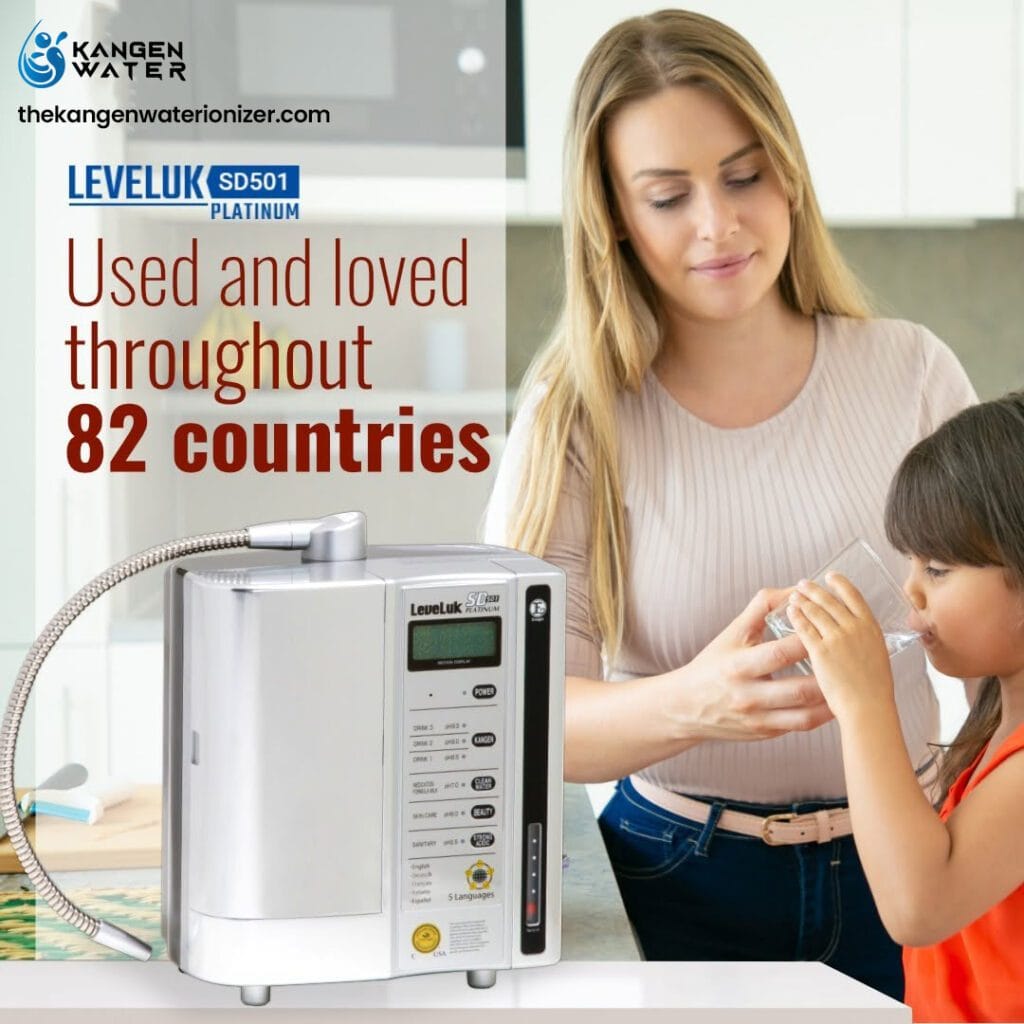
Why Choose Kangen Water
Advanced Technology: Kangen water ionizers make alkaline water that is dependable and works well by using high-quality materials and the latest technology.
Eco-Friendly: Using a Kangen Water machine can help you live a more sustainable and eco-friendly life by making you less dependent on disposable bottles.
Versatile Applications: Kangen Water has a lot of different purposes that may make your everyday life better, from keeping you hydrated to cleaning your home.
Trusted Quality: Kangen Water Enagic is a well-known brand throughout the world that has won honors and certifications for its quality and performance. This means you can be sure you’re getting the greatest water ionization technology.
Safety and a Cautionary Tale
For most healthy adults, sipping pH 8.5–9.5 water is fine. People with kidney issues, however, should talk to their doctor before adding extra minerals. At the other extreme, guzzling water above pH 11 can irritate or even burn the esophagus.
And yes, contamination is possible. In 2021 the Real Water brand—an entirely separate company—issued a nationwide recall after 25 cases of non-viral hepatitis were traced to its bottled alkaline product. The moral? Plants, people, and production lines all need strict hygiene.
How Does Kangen Stack Up Against Other Options?
- Tap Water. Cheap, regulated, mineral content depends on your zip code.
- Reverse Osmosis with remineralisation. Nearly contaminant-free but wastes a bit of water and tastes flat without added minerals.
- Bottled Alkaline. Convenient, pricey, and plastic-heavy.
- Kangen (Electrolysed Reduced Water). Fresh negative ORP, keeps source minerals, removes little else, middling running cost.
In other words, it’s a niche between tap and fancy bottled brands—neither pure filtration nor total indulgence.
Unexpected Household Hacks
Beyond the glass, that aggressive pH range lends itself to dozens of chores: degreasing pans, stripping fruit wax, making crystal-clear ice, lengthening flower-vase life, disinfecting toothbrushes, de-smudging razor blades—the list is surprisingly long. Treat it like a liquid Swiss Army knife and you’ll squeeze extra value from your investment.
Choosing (and Living With) an Ioniser
If you decide to take the plunge, cast an eye over plate count (seven or more is ideal), warranty length, filter prices, and, crucially, how the water performs on your tap supply. A reputable distributor should loan you a unit or at least demo your own source water with pH and ORP strips. Switch on, let the first five seconds run down the drain, and clean religiously: electrodes hate mineral scale.
In Short – Kangen Water
Kangen Water is neither snake oil nor panacea. It’s a cleverly engineered way to create fresh alkaline, hydrogen-infused water—and it can be downright handy for kitchen and cleaning tasks. If the taste delights you, if you suffer from mild heartburn, or if reducing single-use plastic is a priority, an Enagic machine might earn its keep over time. Just go in clear-eyed: the most robust pillars of health still read “balanced diet,” “regular movement,” and “adequate sleep,” not “miracle water.” As ever, hydration is only one piece of a far larger wellness puzzle—though every puzzle, to be fair, does need water to come together.
Customers Testimonials – Kangen Water Ionizer
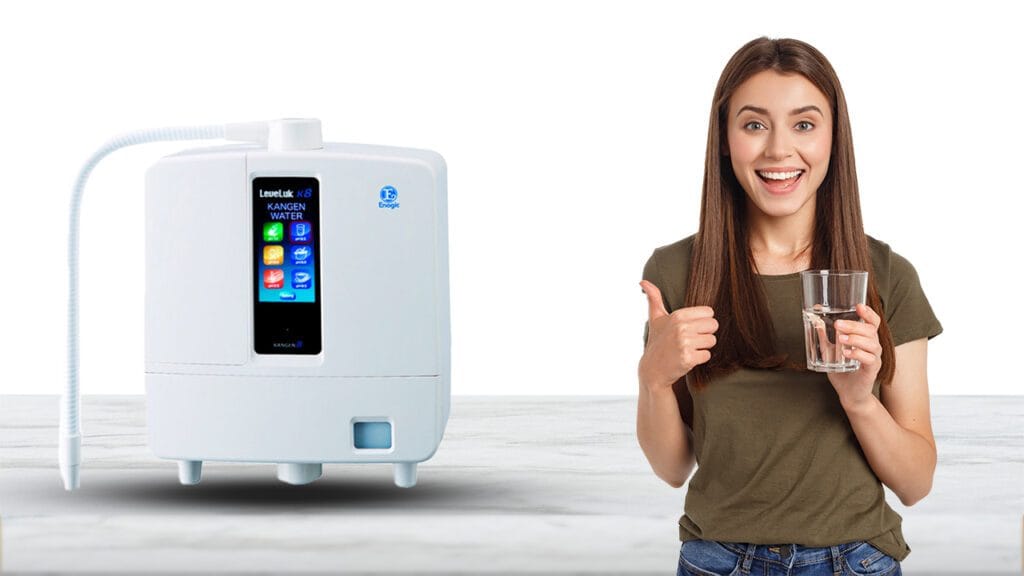
People adore Kangen Water! This is what they said:
“Kangen Water has really changed the way I live my life every day. It tastes fantastic, and I feel more awake and hydrated all day long. – Sarah M.
“I can’t believe how useful Kangen Water is. I use it for a lot of things, like brewing coffee and washing my fruits and veggies. “Highly recommend it!” – Jennifer P.
“As someone who loves to work out, being hydrated is really important to me. Kangen Water is the best water I’ve ever tried for keeping me hydrated. “It’s a game changer!” – Mark S.
“My skin has felt clearer and more moisturized since I started drinking Kangen Water. I use it on my skin, and the effects are great. – Laura G.
“We enjoy Kangen Water as a family. The taste is great, and it’s safe and clean. “We’ve even noticed a difference in how our food tastes!” – James W.
“We made one of the best choices when we bought a Kangen Water machine.” The water tastes and smells great, and we’re using less plastic. – Karen D.
“Kangen Water has made me feel better overall. I feel more awake and hydrated, and I enjoy that I’m drinking good water. – Olivia H.
“I’m so happy with my Kangen Water machine.” It’s simple to operate, and the water tastes great. – Kevin R.
